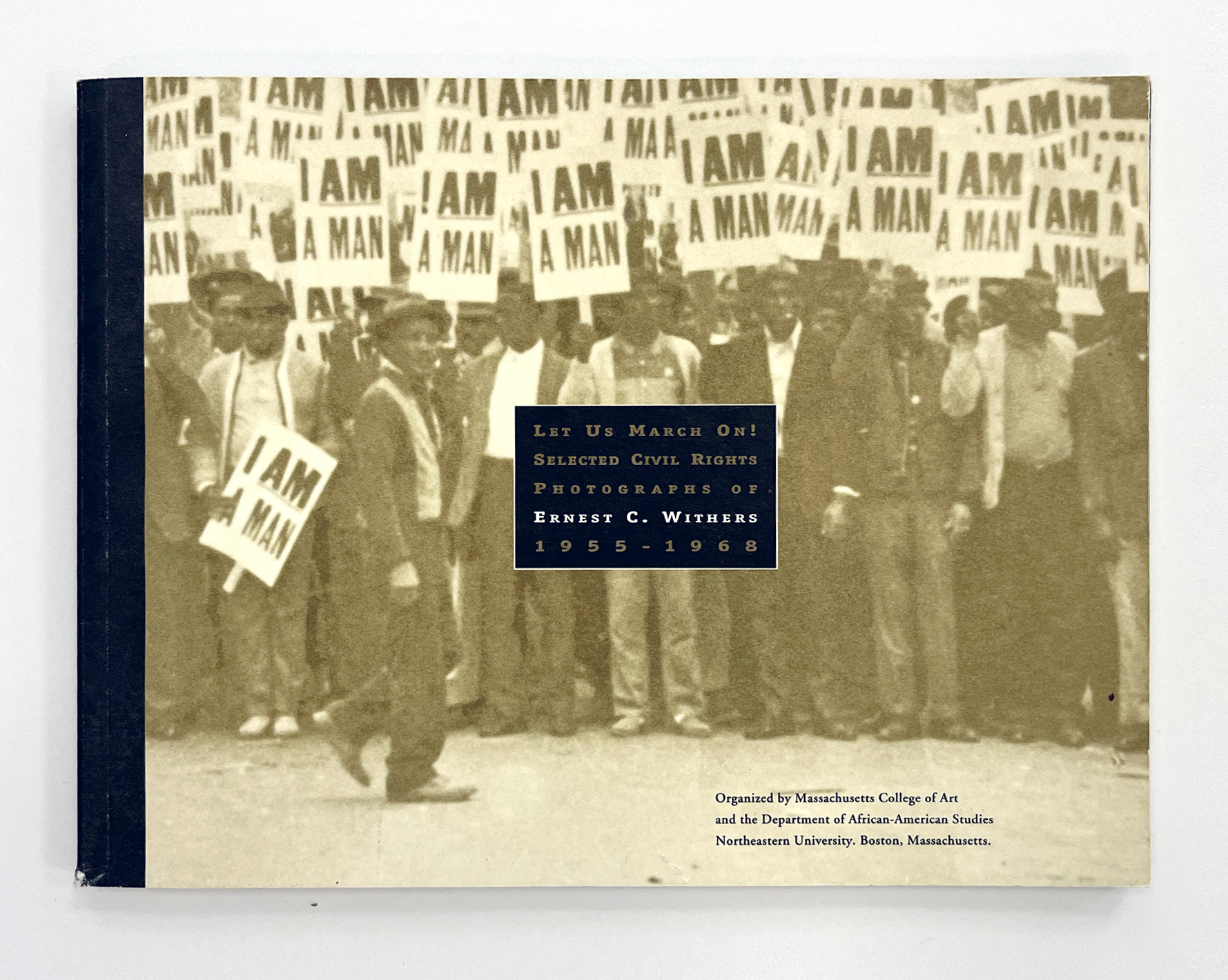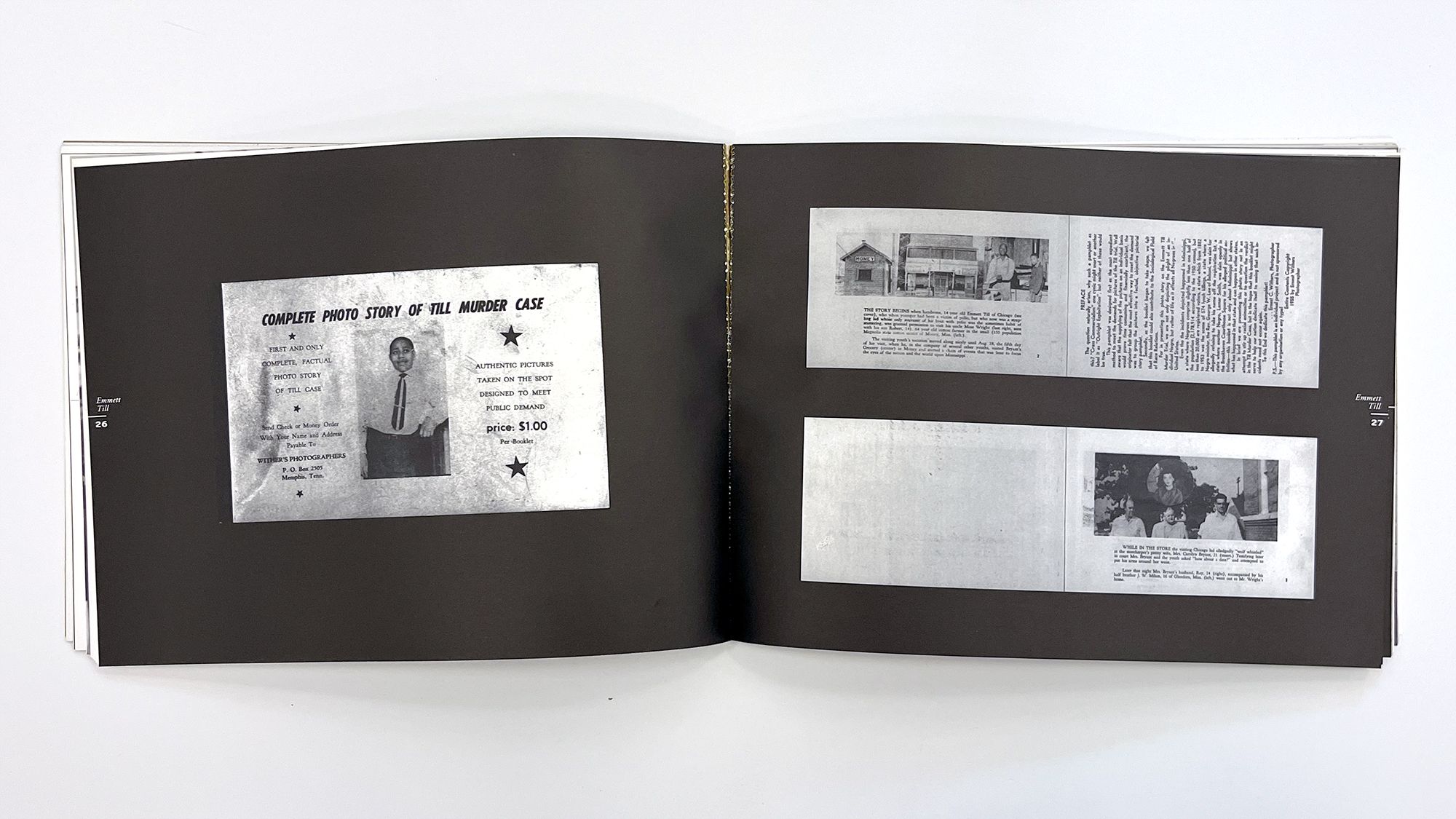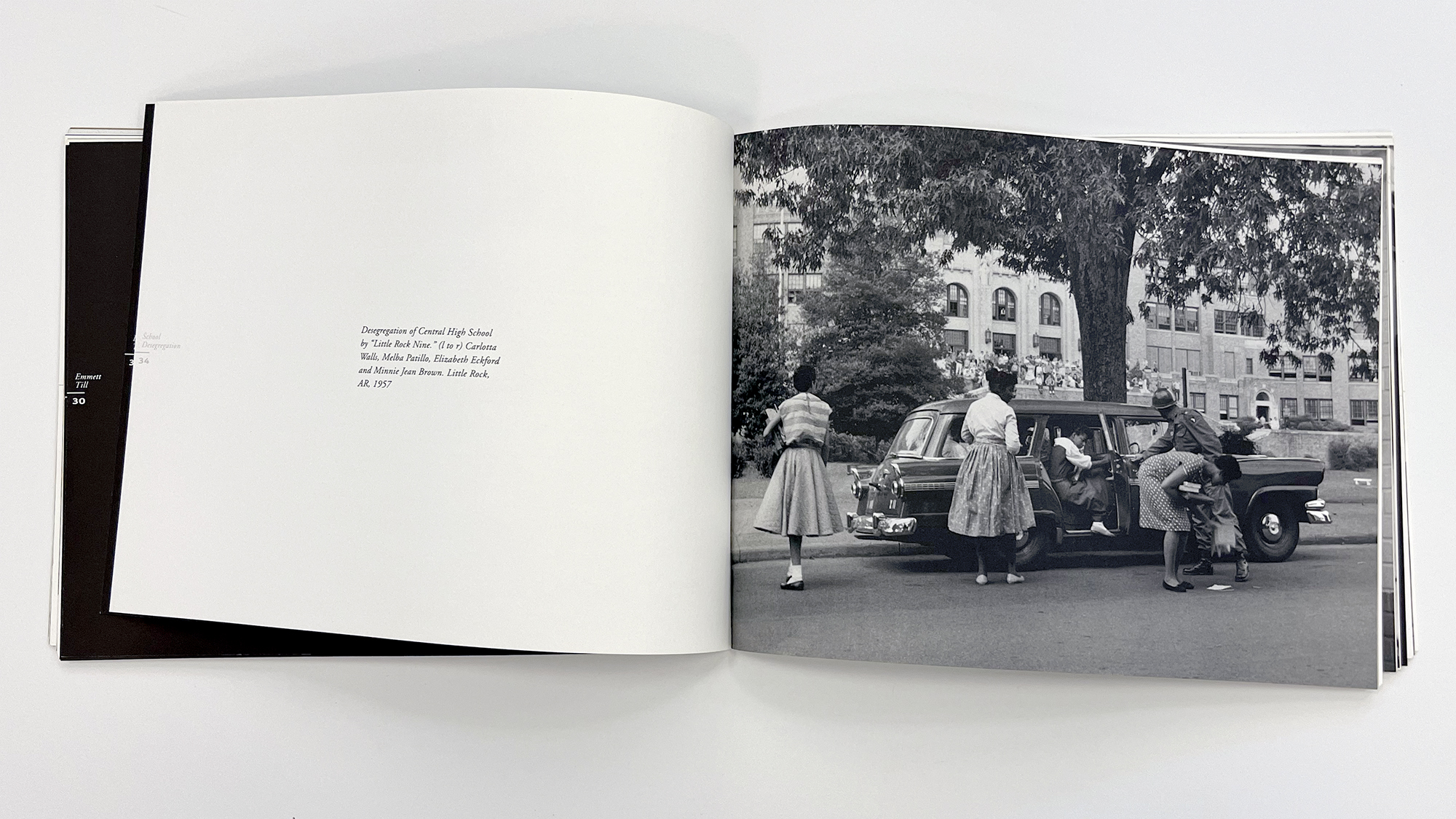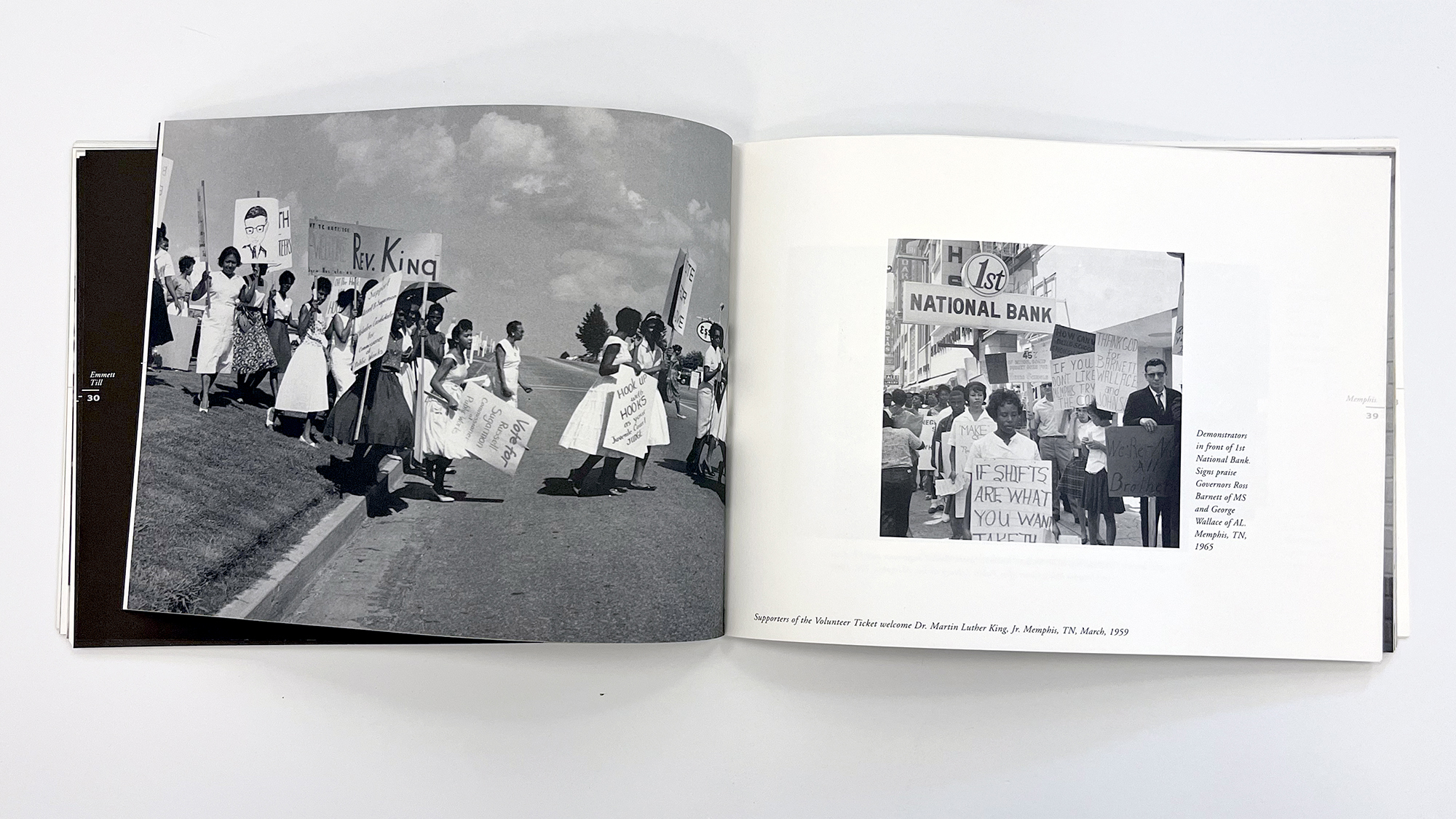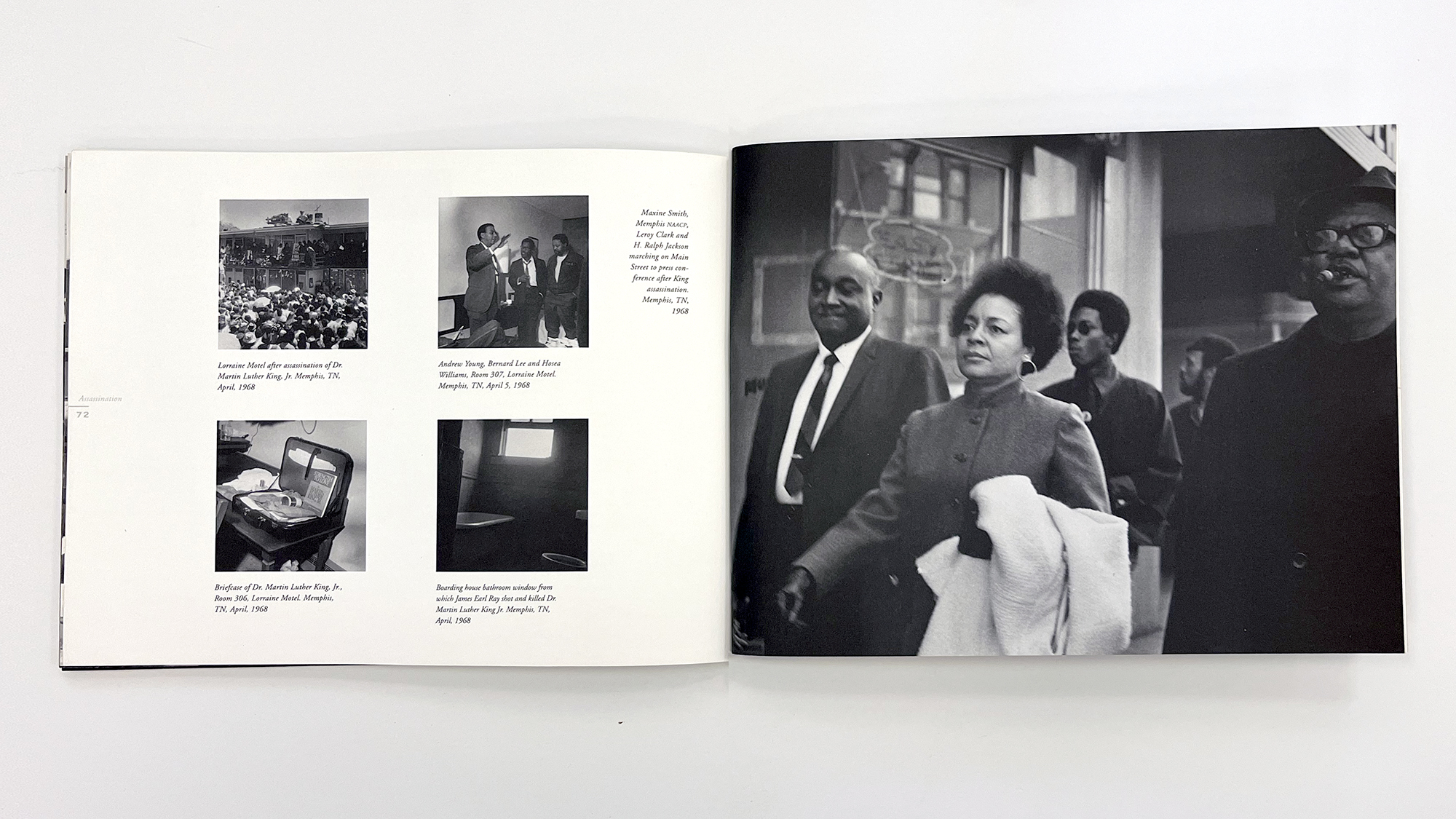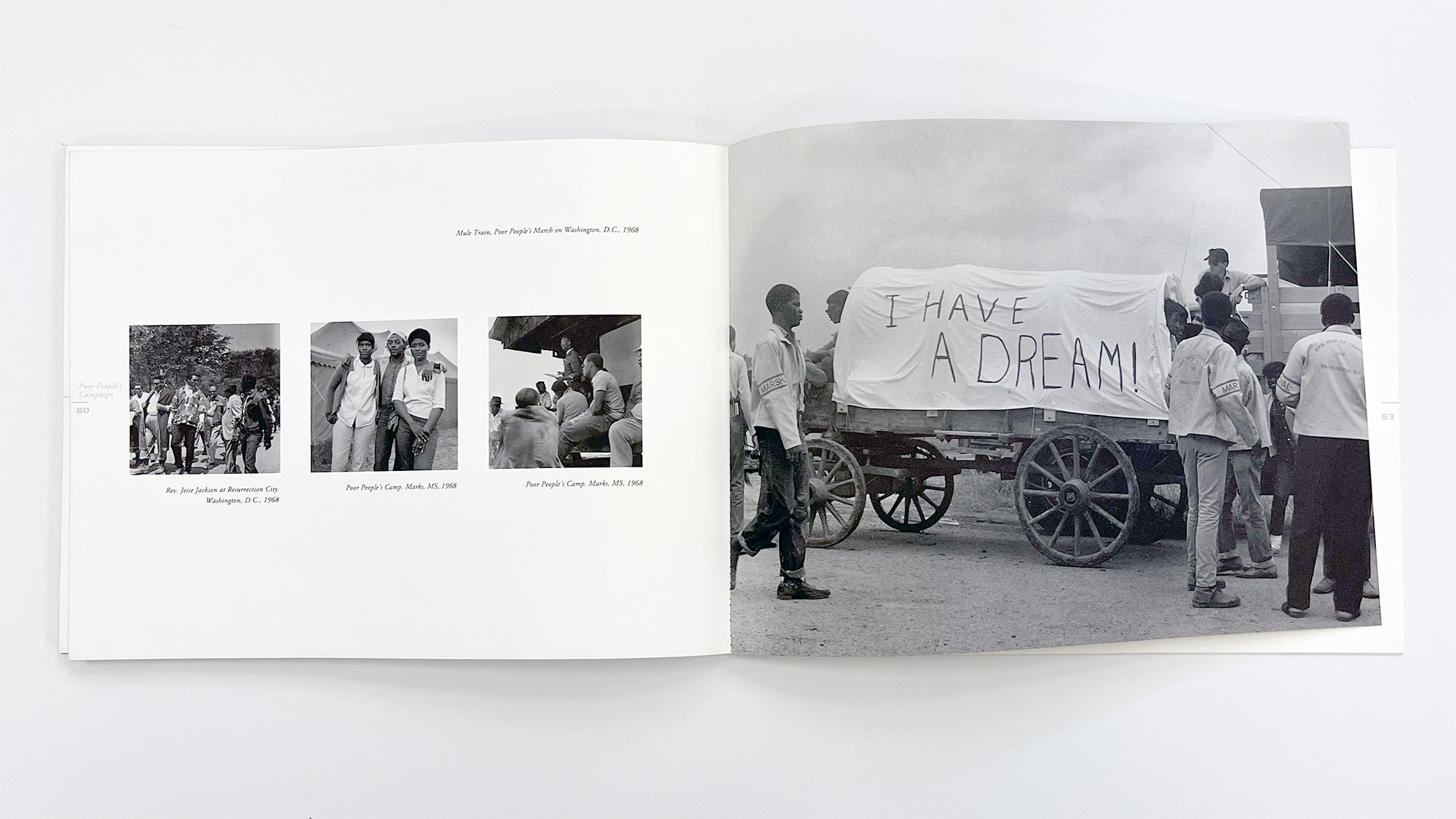LET US MARCH ON! SELECTED CIVIL RIGHTS PHOTOGRAPHS OF ERNEST C. WITHERS
Note from Richard: This book, produced by Massachusetts College of Art and Northeastern University, was the first substantial assignment we were awarded during our first year in business. It was also my first deep dive into the Civil Rights movement in the United States. It’s shocking to look back on an American education spent entirely in the Progressive Northern States and find that I had to piece together the events of these pivotal decades in world history through a forensic examination of box after box of photographs and negatives all stuck together with cellophane tape and dust. I painstakingly separated those images, and I did my research, and I learned about the power of labor movements and the courage of freedom fighters.
I also learned about the inevitable remastering of history, over time. The photographer, Ernest Withers, downplayed his role as an artist at the frontlines of the Civil Rights movement. Rather, he considered himself a propagandist with clear political intentionality to his work. This idea resonated with me and I incorporated it in how I imagined my own work. He had become one of my few heroes: an artist making a dedication of his life in a way that eclipsed his art. Many years later, I read a book called “Bluff City”, and I had to contend with the narrative I had created for myself. Withers was more than a propagandist, he was an activist. In advance of his famous “I Am A Man” photographs, he helped cut down the sticks and affix the poster boards to make the iconic signs. Later, the young men carrying those signs would use them as weapons. What “Bluff City” brought forward was Withers’s double life. Not only was he an ally to the movement, he was also an FBI informant.
Yes—he betrayed of the movement. Yes—he betrayed his own work and integrity. Also, yes—his photographs were essential to the advancement of the movement, and also—who am I to pass judgement on another Black man for the decisions he makes to survive the hatred, contempt, trauma, and racism he endured and we continue to face, today. History is imperfect and so are we. Still—we are at our best and our most influential when we work to reconcile our pasts with empathy for the struggles of the oppressed. That’s what I learned way back in the beginning. That’s what I work toward every day.
GOTV Poster
↓
